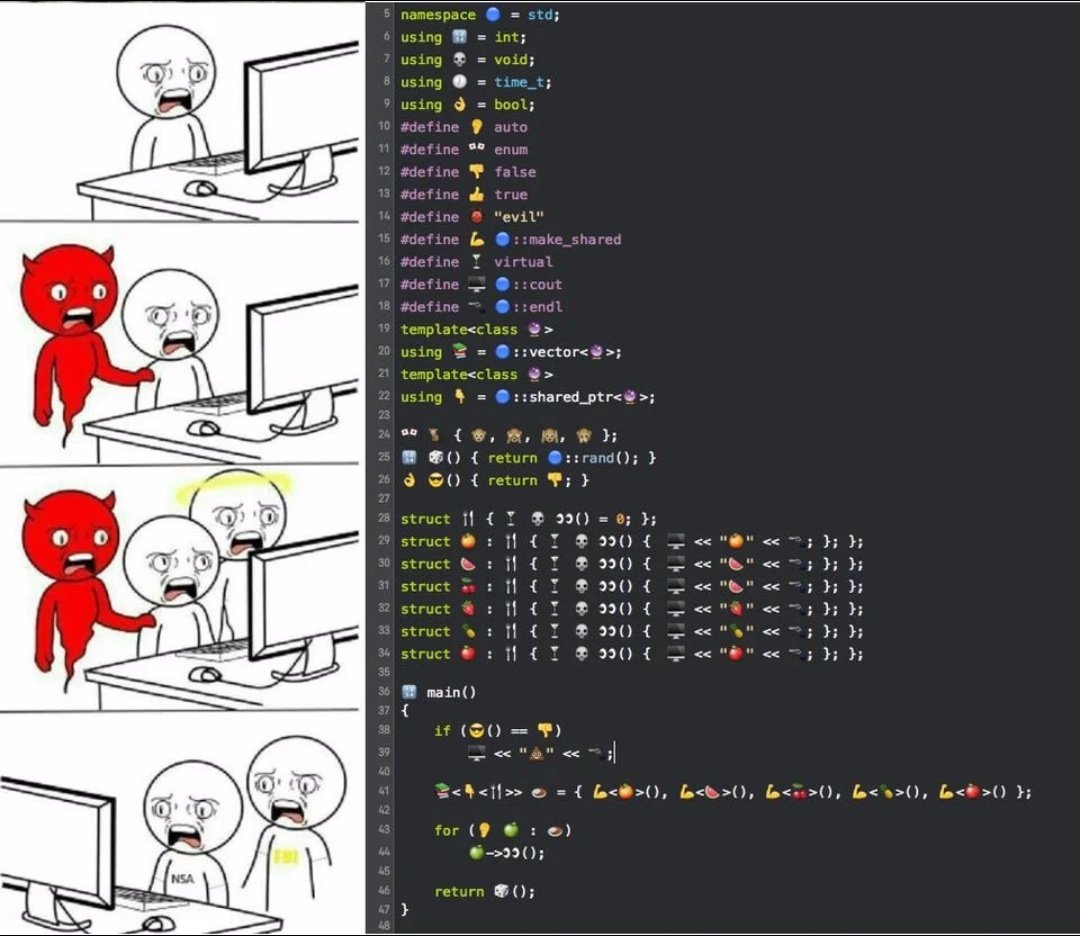Looks like it creates a few emoji printers in a vector, then prints them all. The output is all emoji, of course. The main function exits with a random return value just to be more quirky.
I'm not sure what the purpose of the 😎 function is. In main that first predicate is always true, so it prints the poop emoji. I don't know why it's behind an if.
Also, there's a copy-paste error on line 31. Wrong emoji is used.
